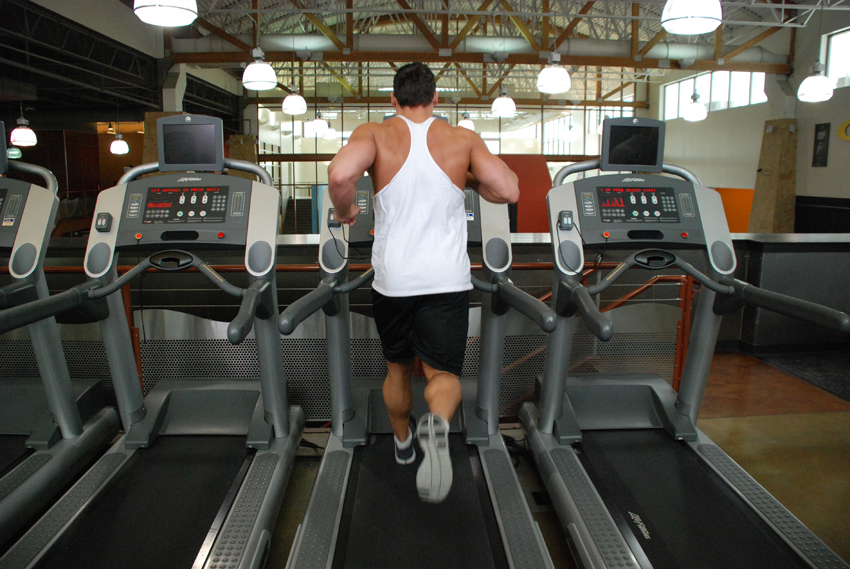 Treadmill walks, jogs, runs or sprints can be a great way to get your heart rate up and your blood pumping. But there are a lot of mistakes that even avid gym-goers make.
Treadmill walks, jogs, runs or sprints can be a great way to get your heart rate up and your blood pumping. But there are a lot of mistakes that even avid gym-goers make.
Here are 5 common treadmill mistakes:
- Spending too much time. When it comes to time on the treadmill, more isn’t more. If you’re spending 30 or 45 minutes or more on a treadmill, you may be cannibalizing your results. Longer cardio sessions result in the release of an anabolic hormone called cortisol that reduces protein synthesis, facilitates the conversation of protein to glucose and stops tissues growth. It’s also associated with increases in fat stores around the body’s midsection. Instead of a low intensity, long cardio session on the treadmill, challenge yourself. Do more in less time. Maybe even try high intensity interval training.
- Holding on. Please, stop holding onto the treadmill. By holding on, you’re negating the intensity of your workout - especially if you’re using an incline. In fact, it’s estimated that holding onto the treadmill reduces calories burned by 20% - 25%. It also worsens posture, balance and doesn’t translate to real world gains. If you’re running on a street or track, there’s nothing to hold on to. Let go.
- Static stretching. A lot of runners engage in static stretching before their treadmill session. It’s the type of stretching wherein you hold a pose for an amount of time - like touching your toes. However, recent studies suggest that static stretching decreases strength and power and increases injury risk. Replace static stretching with dynamic stretching like jumping jacks or arm circles.
- Not using the incline. Many runners ignore the incline - mostly because it makes the workout more challenging. But that’s exactly why you should love and use it! For every 1% increase in the incline, you expend 4% more energy. This is especially useful if you’re not able to increase your speed, but still want an extra challenge. It also shifts muscle use upward - and can give you a great butt workout.
- You’re on autopilot. Doing the same workout every day gives you the same results. Most cardio exercisers cruise through their workout session. Some are even able to talk on the phone or text while exercising. I’ve got news for you: If you can text while running, you’re not running fast enough. If you want enhanced results, you need to increase the intensity of your workout; you will always get out of your workout what you put into it. So instead of doing the same old treadmill workout, do something that’s intense and challenging. And then keep pushing yourself.
What other mistakes do you see people making on the treadmill? Share them in the comments below!











